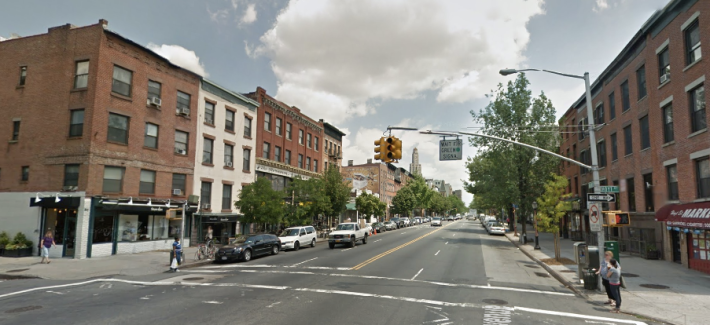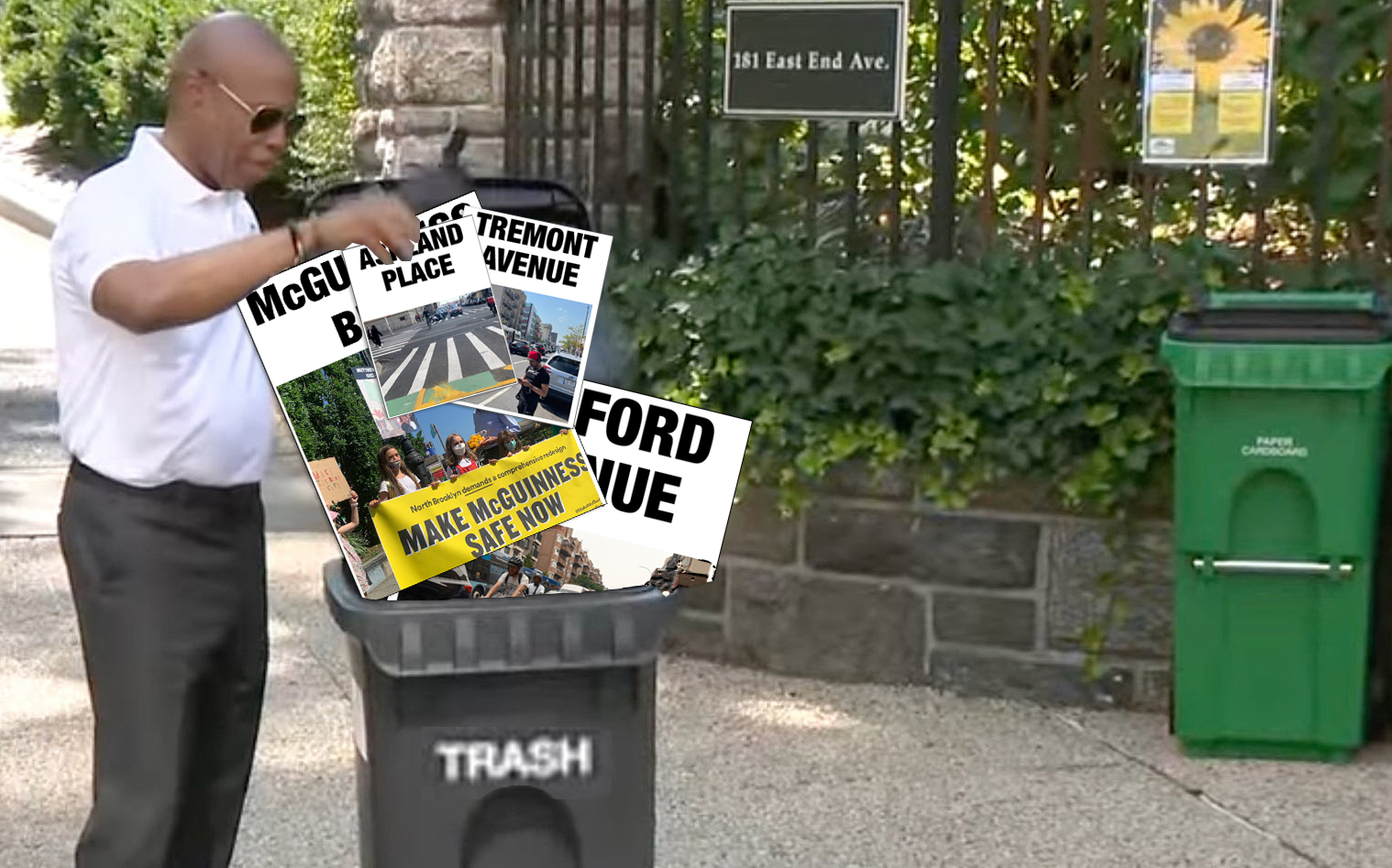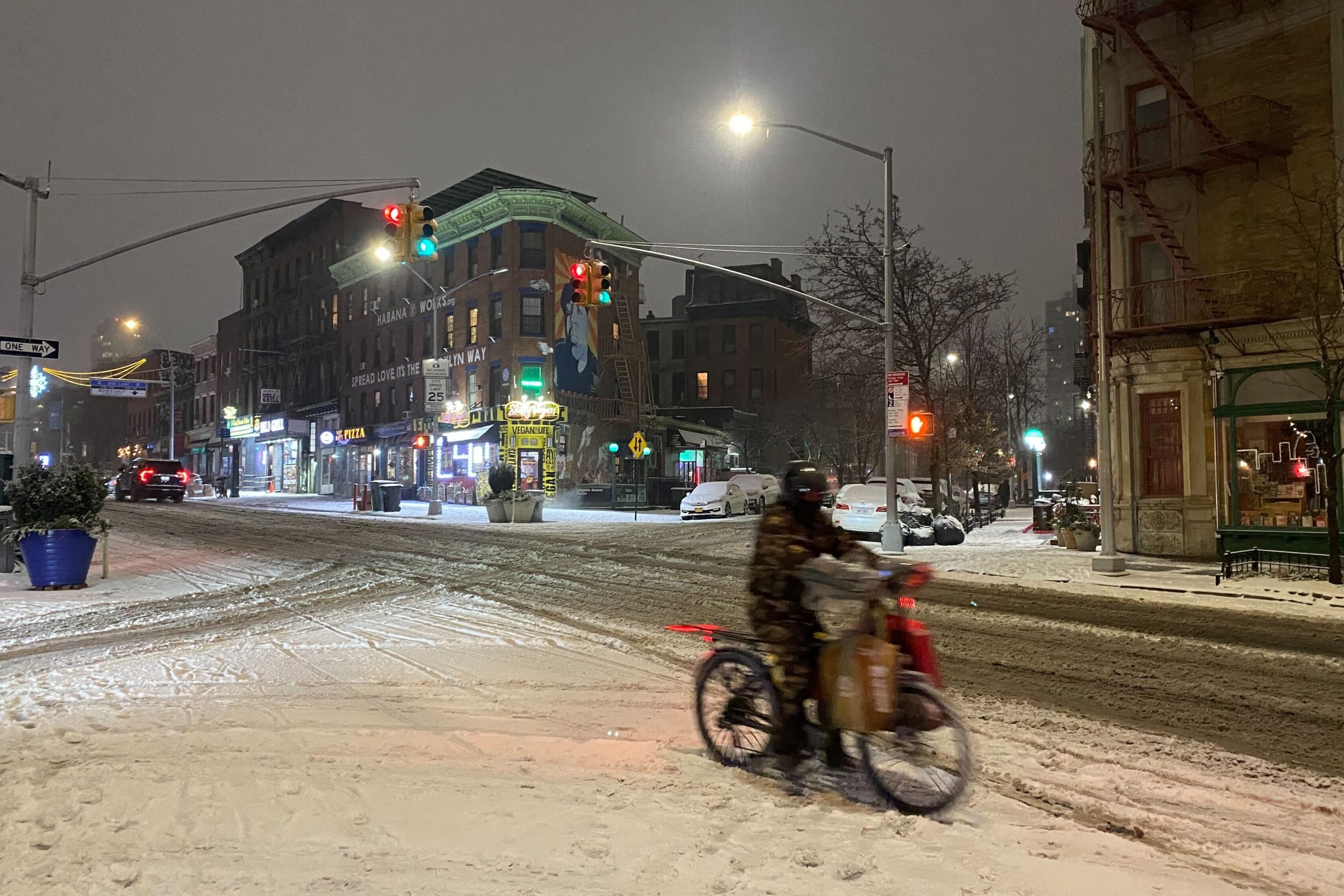
Last week, Atlantic Avenue in Brooklyn became the city's first "arterial slow zone" with a 25 mph speed limit. Now, a business improvement district on the avenue's western end is asking for pedestrian safety upgrades, and Community Board 2's transportation committee has signed on.
"Pedestrian improvements are customer improvements," said Atlantic Avenue BID Executive Director Josef Szende. "[Shoppers] on Atlantic Avenue are all pedestrians, at least at some point in their journey."
The BID is asking DOT to study the following safety improvements [PDF]:
- Leading pedestrian intervals at all eleven intersections within the BID area. (LPIs have already been installed at Clinton, Third and Fourth Avenues.)
- Bus bulb-outs at corners to speed loading time for bus riders and shorten crossing distances for pedestrians.
- Shared-lane markings for cyclists along Atlantic Avenue.
Community board staff refused to talk about Tuesday's unanimous vote supporting the BID's request, but a board member characterized the committee's discussion as involving very little debate. Szende said the committee was skeptical of the need for shared-lane markings, since there are parallel bike lanes on Dean, Bergen and Schermerhorn Streets, but did not ask the BID to remove sharrows from its letter to DOT.
The committee did request that the BID also ask DOT about improvements to Times Plaza, the triangle between Fourth, Atlantic, and Flatbush Avenues. "It's kind of a drab triangle right now. It's just asphalt. There's no lighting, there's no wayfinding," Szende said. "We're asking DOT to take an honest look at these things, to consider them, and come back to us with whatever they think is feasible."
A fourth request is for signal timing to discourage speeding along Atlantic. Szende said DOT's announcement last week of an arterial slow zone on Atlantic, which the city rolled out only after the BID first approached the community board, addresses this concern.
This isn't the BID's first foray into transportation policy: Last year, it received parking meter adjustments as part of DOT's PARK Smart reform. I asked Szende if the changes, which aim to improve parking availability for shoppers by increasing prices at meters where people park for hours at a time, have garnered much of a reaction since being implemented. "If the changes in the parking meter rates were going to cause a full scale exodus or revolution in customer behavior, that would've already happened," he said.
Szende said that placard abuse is limiting the program's effectiveness. "Someone who is coming to shop or pick something up from a store is completely blocked up from parking," he said. The BID has had productive discussions with the Corrections Department, which operates a facility along Atlantic, but has not come to a solution to stem the tide of parking placards. "Some are legitimate, some are not," Szende said of the free parking passes.
The prevalence of state and city agencies in Downtown Brooklyn exacerbates the problem. "Perhaps if it were a single agency, the problem would've already been solved, but it has not," Szende said. "We would really need some leadership from the top to make it a serious priority."





